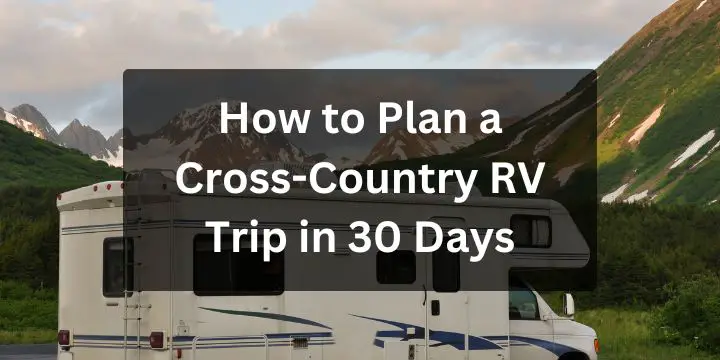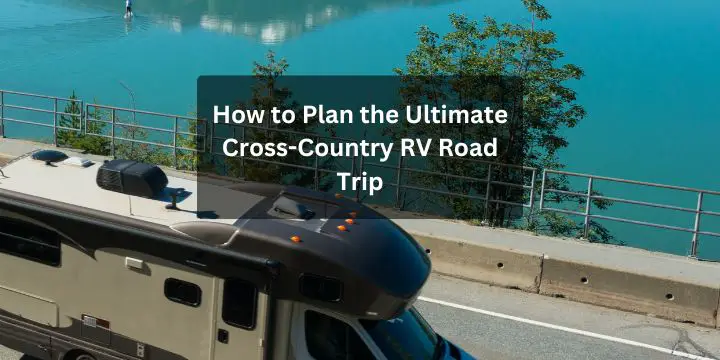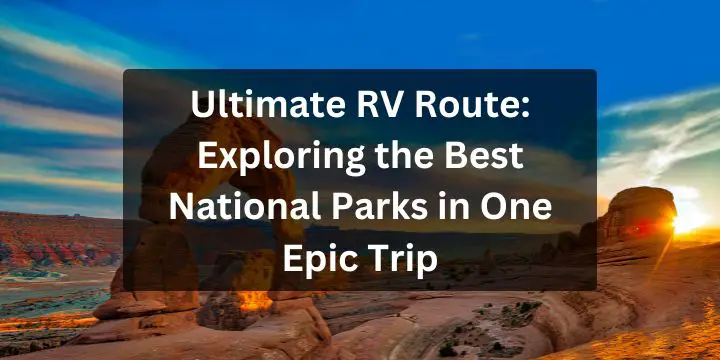
Embarking on a cross-country RV trip is a dream adventure, combining the freedom of the open road with the comfort of having your home on wheels.
However, such an ambitious journey requires careful planning to ensure a smooth and memorable experience. Here’s a comprehensive guide to help you plan your ultimate 30-day RV road trip across the USA.
Step 1: Define Your Goals and Priorities
Before hitting the road, clarify what you want from your trip:
- Key Destinations: Decide on must-visit places. Do you want to explore national parks, historic landmarks, or coastal towns?
- Pace of Travel: Determine whether you prefer long driving days or shorter hops between destinations.
- Travel Style: Are you aiming for luxury RV resorts or rustic boondocking spots?
Step 2: Plan Your Route
Mapping out your route is the backbone of your trip.
- Start with Major Stops: Highlight your key destinations on a map and connect them logically.
- Consider Scenic Byways: Incorporate routes like Route 66 or the Pacific Coast Highway for breathtaking views.
- Avoid Overloading: Aim to travel no more than 300 miles per day to avoid burnout.
ead More: Top 7 Unforgettable RV Trips in the USA (In 2 Weeks!)
Step 3: Budget Wisely
Cross-country trips can get expensive, so it’s crucial to manage your finances.
- Fuel Costs: Calculate approximate gas expenses based on your RV’s mileage and route.
- Campground Fees: Research costs for RV parks, state parks, and free camping options.
- Food and Activities: Allocate funds for groceries, dining out, and attractions.
Step 4: Book Campgrounds in Advance
Popular destinations and RV parks can fill up quickly, especially during peak seasons.
- Research Options: Use apps like Campendium or AllStays to find campgrounds along your route.
- Make Reservations: Secure spots at high-demand locations, such as national park campgrounds.
- Have a Backup Plan: Identify nearby alternatives in case of last-minute changes.
Step 5: Prepare Your RV
Ensure your vehicle is road-trip ready.
- Inspect Systems: Check tires, brakes, batteries, and fluids. Address any maintenance issues.
- Stock Essentials: Pack tools, spare parts, and an emergency kit.
- Organize Supplies: Arrange kitchenware, clothing, and toiletries for easy access.
Step 6: Pack Strategically
Space is limited in an RV, so pack only what you need.
- Seasonal Clothing: Consider the weather at your destinations and pack accordingly.
- Food and Water: Stock up on non-perishable items and refill water tanks regularly.
- Entertainment: Bring books, games, and downloads for downtime.
Step 7: Stay Connected and Informed
Access to navigation and communication tools is essential.
- GPS and Maps: Use reliable navigation apps, but also keep a physical map as a backup.
- Wi-Fi and Signal Boosters: Invest in a mobile hotspot or signal booster for remote areas.
- Weather Updates: Monitor forecasts to avoid severe weather or unsafe conditions.
Step 8: Create a Daily Itinerary
While flexibility is important, having a rough daily plan helps maintain structure.
- Driving Schedule: Plan departure times to reach campgrounds before dark.
- Activities: Allocate time for sightseeing, hiking, or relaxing at each stop.
- Rest Days: Include days to stay put and recharge.
Step 9: Embrace Flexibility
Even the best-laid plans can change, so be ready to adapt.
- Expect Delays: Traffic, weather, or unexpected detours may alter your timeline.
- Be Open to New Experiences: Spontaneous stops often lead to the best memories.
- Stay Positive: Focus on enjoying the journey rather than sticking rigidly to the plan.
Step 10: Enjoy the Journey
Cross-country RV travel is as much about the journey as the destinations.
- Connect with Fellow Travelers: Share stories and tips with other RV enthusiasts.
- Document Your Trip: Keep a journal or blog to capture memories and share experiences.
- Relish the Freedom: Savor the flexibility of RV life and the beauty of the open road.
Sample 30-Day Itinerary
Here’s an example of how to structure your trip:
- Week 1: Start in the East Coast, exploring landmarks like the Blue Ridge Parkway and Great Smoky Mountains National Park.
- Week 2: Travel through the Midwest, visiting iconic spots like Mount Rushmore and Badlands National Park.
- Week 3: Head west to Yellowstone, Grand Teton, and Glacier National Parks.
- Week 4: Conclude on the West Coast, enjoying the Pacific Coast Highway and Yosemite National Park.
Final Thoughts
Planning a cross-country RV trip in 30 days is an exciting challenge that requires preparation, flexibility, and a sense of adventure. By following these steps, you can ensure a safe, enjoyable, and unforgettable journey. So fire up your RV, hit the road, and let the adventure begin!

